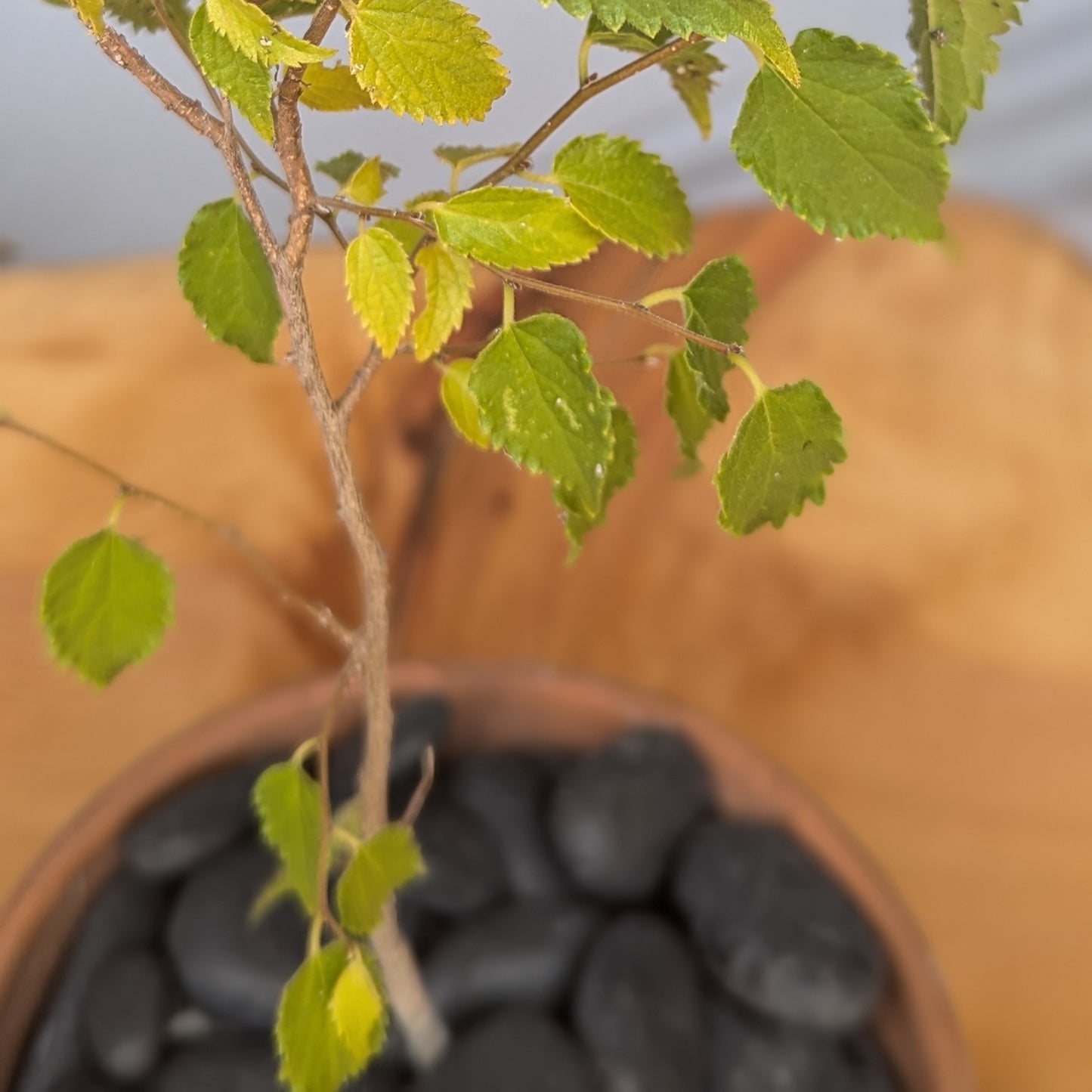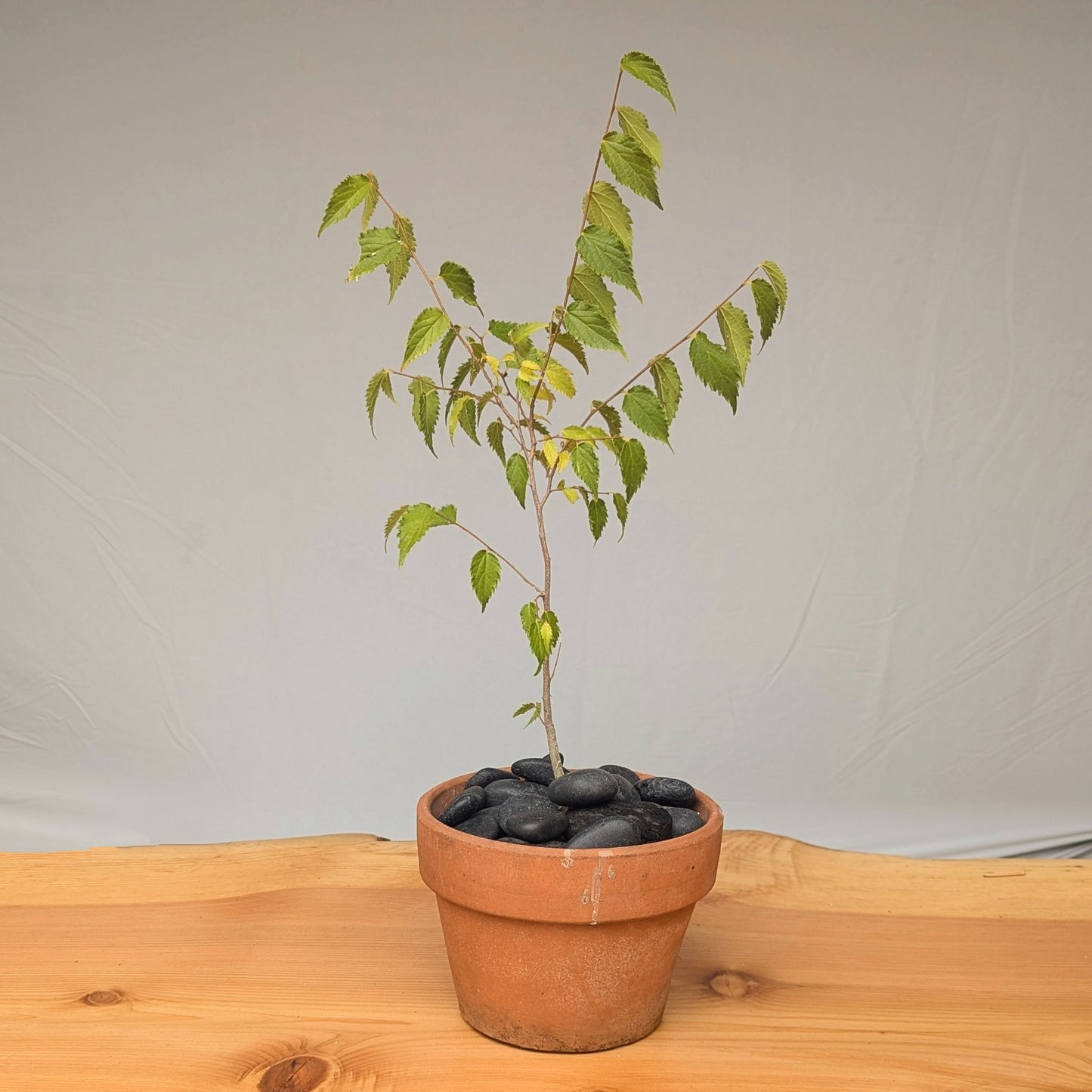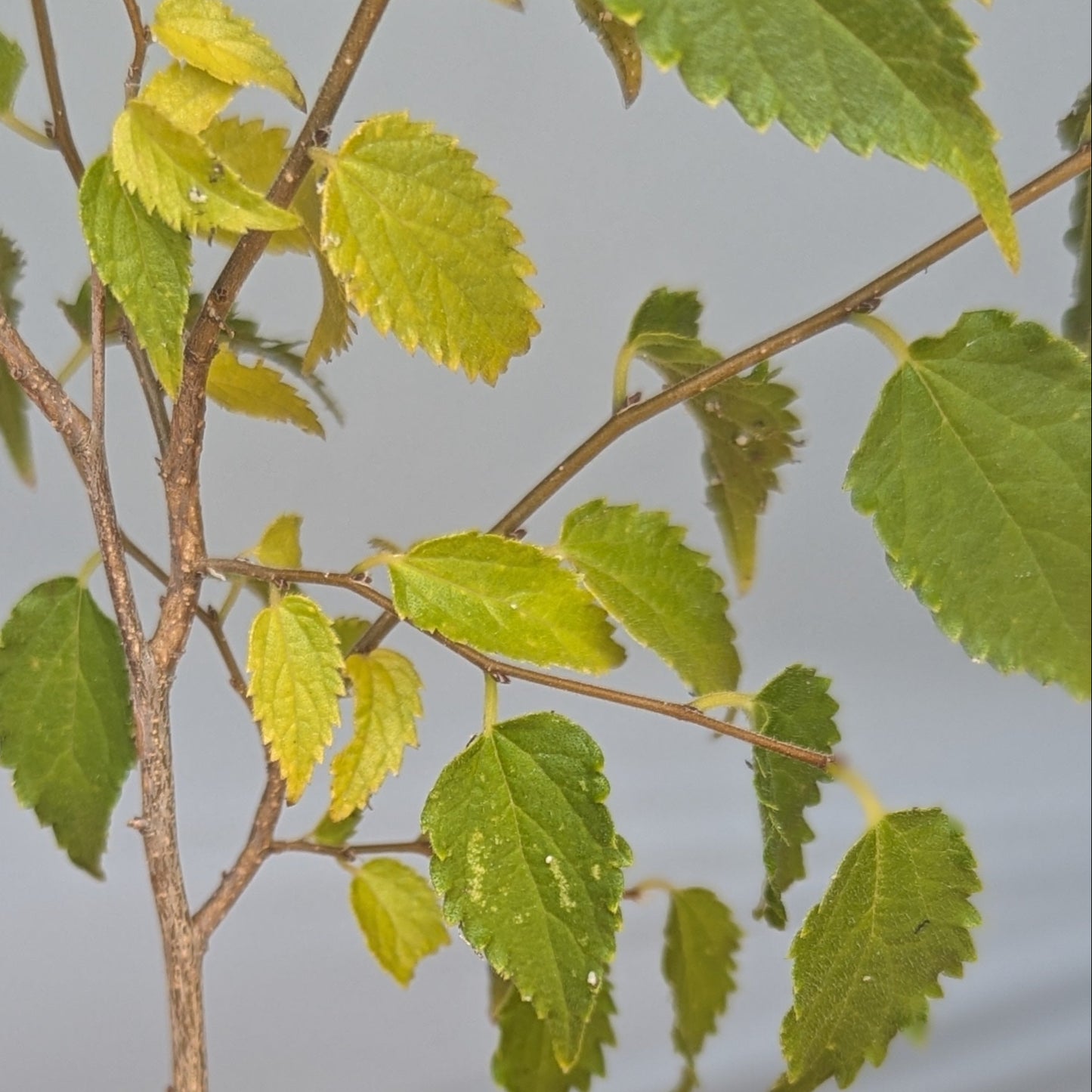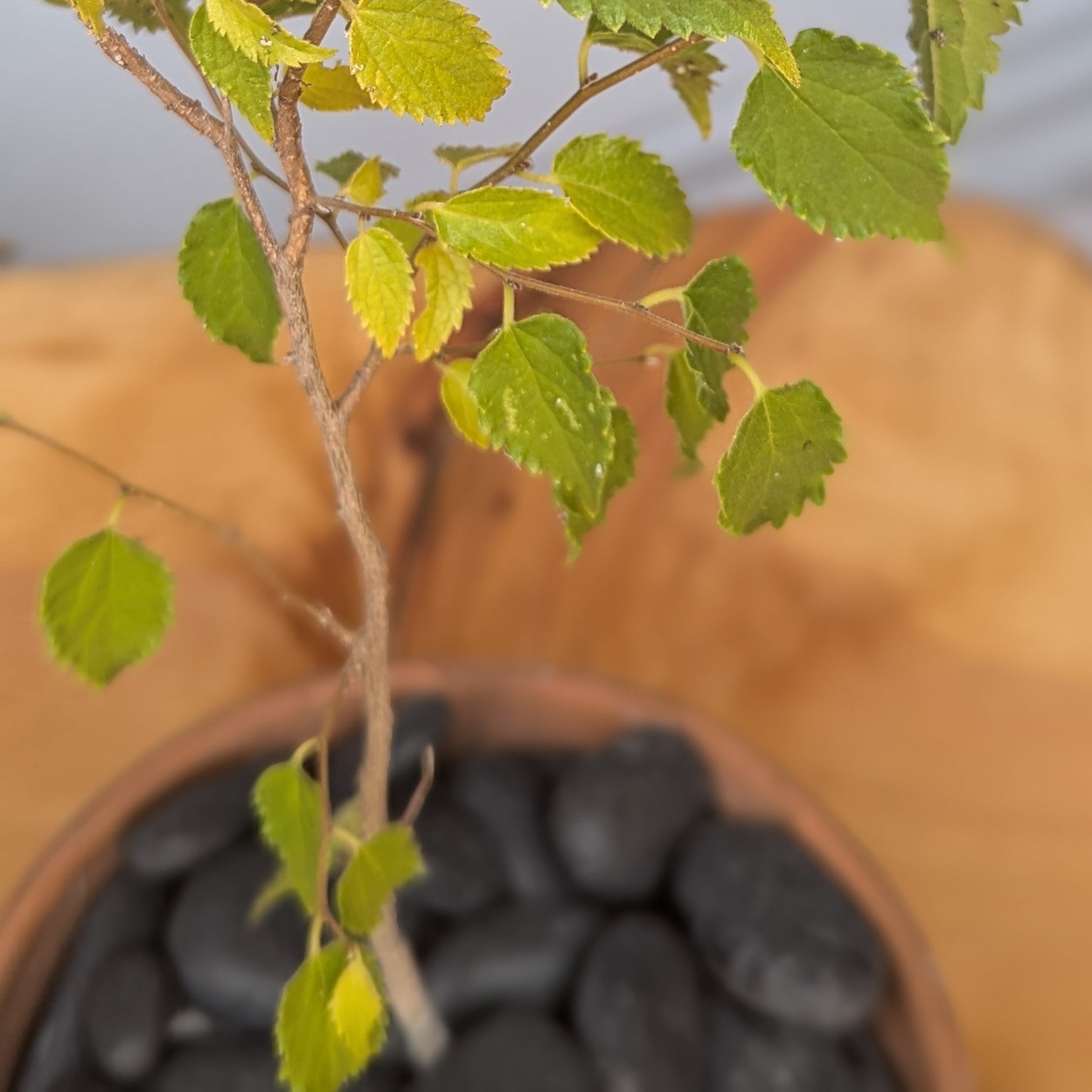1
/
of
3
Cedar Rose Nursery
Celtis australis, Mediterranean Hackberry
Celtis australis, Mediterranean Hackberry
Regular price
$18.00 USD
Regular price
Sale price
$18.00 USD
Unit price
/
per
Shipping calculated at checkout.
Couldn't load pickup availability
Celtis australis (Mediterranean Hackberry)
Celtis Australis, commonly known as the Mediterranean Hackberry or European Nettle Tree, is a hardy, deciduous tree native to Southern Europe and parts of Asia. This elegant species is prized for its adaptability, striking form, and utility in landscaping and bonsai cultivation.
Features
- Size & Growth: A medium to large tree, it typically reaches heights of 15–25 meters (50–80 feet) with a broad, rounded crown. Its graceful branching pattern makes it a standout in any setting.
- Leaves: The lance-shaped, serrated leaves are dark green in summer and transition to golden yellow in the fall, offering seasonal visual interest.
- Flowers & Fruit: Small, inconspicuous flowers bloom in spring, followed by tiny, dark purple, edible drupes in late summer, providing food for birds and wildlife.
- Bark: Smooth and pale gray, the bark matures to develop an attractive, fissured texture over time.
Growing Requirements
- Sunlight: Thrives in full sun but can tolerate light shade.
- Soil: Adapts to a wide range of soils, including poor, dry, or rocky conditions, making it ideal for challenging sites.
- Water: Drought-tolerant once established, but benefits from occasional deep watering in arid climates.
Uses
- Landscape: Often planted as a shade or ornamental tree, it is well-suited for parks, streets, and large gardens.
- Erosion Control: Its extensive root system makes it effective in stabilizing slopes and preventing soil erosion.
- Bonsai: A popular choice for bonsai enthusiasts due to its manageable growth and striking features, such as the bark texture and small leaves.
Cultural Significance
Mediterranean Hackberry has been valued historically for its durable wood, used in tool-making and furniture. Its fruits have traditional medicinal uses and can be eaten fresh or dried.
Care Tips
- Prune in winter to maintain its shape and remove any deadwood.
- Mulch around the base to conserve moisture and suppress weeds, but avoid piling it against the trunk.
- Monitor for pests like scale insects or leaf galls, though this species is generally low-maintenance and pest-resistant.
Size
- Comes in a 4" square, black, plastic nursery pot. Ceramic pot is for display only.
Share






